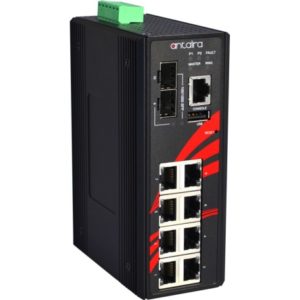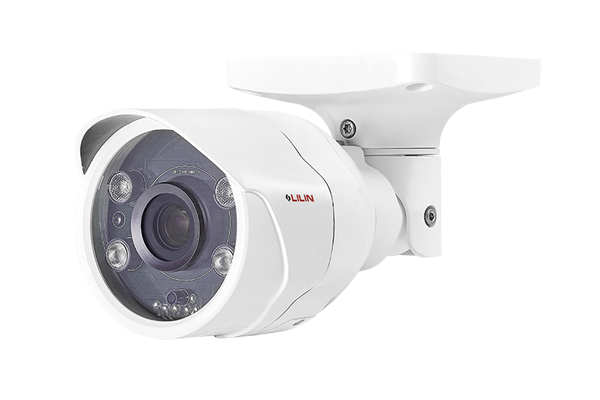Running cables to a camera is no fun at all. Every unit needs both power and a way of sending feedback to the base. It’s hard enough inside a building or vehicle, but remote installations multiply the challenges. That means taking cables out to access gates, parking lots, or anywhere else that needs monitoring. Run them above ground and they’re exposed to weather and attack. Put them underground and you face some steep bills. Switching to Power-over-Ethernet (PoE) cameras and a PoE switch halves the problem and could help solve it entirely.
Camera Applications
Camera systems have almost limitless applications. Among the most common are:
- Event recording. Here cameras watch over doorways, parking lots, and commercial premises. Video is saved to a DVR (Digital Video Recorder) and retrieved as needed for investigations and as evidence. Multi-camera installations complicate video storage, needing either one DVR per feed or the use of an NVR (network video recorder).
- Remote monitoring. The video feed is viewed live for remote control of access doorways and gates. Pan-tilt-zoom (PTZ) cameras let the operator scan around and zoom in on objects or people of interest.
- In-vehicle monitoring and recording. These systems are used in buses and trains to discourage theft and provide evidence of criminal activities.
Ethernet/IP Camera Basics
Early security cameras used an analog communications interface, meaning BNC connectors and heavy co-ax cables. Today, cameras are digital. That yielded big improvements in image size and quality and has opened the door to new communications options.
Webcams, for instance, use USB. However, USB has a short range, limiting its use in remote monitoring applications. Industrial and commercial users tend to prefer cameras that communicate over Ethernet. Some people call these “IP” cameras (short for Internet protocol) because they send images in packetized form, while others prefer “Ethernet cameras”. You may also hear the term “GigE”, short for Gigabit Ethernet, which refers to data transmission speed. All networking equipment uses the same cable: CAT 5 or CAT 6 with RJ45 connectors.
Another feature of these cameras is their low power requirement. The image acquisition chip draws very little power. Even after digitization, not much more is needed for image transmission. Many IP cameras operate on less than 5 watts (W).
Power-over-Ethernet
Look at an RJ45 jack, and you’ll see eight individual connectors. Only four of these carry data. The remainder went unused until the invention of PoE. Around the year 2000, engineers working on VoIP phones at Cisco hit on the idea of running power through these otherwise unneeded wires.
Today PoE is governed by two IEEE standards, 802.3af and 802.3at. The former defines a power supply of no more than 15.4 W per port or cable. The latter, sometimes referred to as PoE+, provides up to 30 W. That’s more than enough to power most modern digital cameras.
Two things are needed to use PoE: a camera designed to receive power through the RJ45 connection and a device to inject power into the cable, like a PoE injector. This can be done by the network interface card (NIC) in a PC or by a network switch or bridge.
Building the PoE Camera Network
In a single-camera application, it may be possible to connect the camera directly to the DVR or PC with an Ethernet cable. IP cameras have a range of less than 100 meters in point-to-point mode (hooked directly to a DVR or computer). But, they can also be connected through network Ethernet switches. A switch lets multiple cameras connect to a DVR or computer through a single cable.
A more cost-effective approach might be to use a wireless bridge. This links an Ethernet device to a wireless network. A PoE bridge like Antaira’s line of Industrial Wireless Access Point/Bridge/Repeaters saves the time and expense of running cable.
In multi-camera setups, Ethernet makes it possible to send images from two or more cameras through a single cable and hence into an NVR or PC. This is done by using an Ethernet switch. A switch is a network device that links multiple Ethernet devices to a single point. Using a PoE switch avoids the time, complexity, and expense of making individual power connections to each component or device.
A PoE switch takes two forms: managed and unmanaged. While an unmanaged device provides basic connectivity, it broadcasts received images to every connected device, creating unneeded network traffic. It also lacks the remote access functionality used by network administrators to optimize network performance. For example, the Antaira LNP-0702G-SFP is a class 1, div 2 ethernet switch that provides seven ports for Ethernet devices and complies with both the IEEE 802. at and af standards. However, it has no options for remote configuration, management, or monitoring. Simply put, it’s a plug-and-play device.

Conversely, a managed PoE switch like the LMP-1002G-SFP series, uses functions such as Internet Group Management Protocol (IGMP) to direct traffic only where it is needed, thus reducing traffic and allowing higher speeds. A network administrator may remotely access and configure how the switch operates.
Industrial Considerations
For reliable performance over extended periods, camera communication equipment including switches and cables should be of industrial quality. It must be rated for a wide temperature range and provide both surge and ESD protection. Ideally, Ethernet switches will be DIN-rail mountable for easy installation into an enclosure and accept 24V or 48V DC input.
Advantages of PoE Switches
Single-Cable Solution: Traditional IP cameras require two separate cables: one for data (Ethernet) and another for power (usually a power adapter or Power over Ethernet injector). With a PoE switch, you can transmit both data and power over a single Ethernet cable, simplifying cable management and reducing clutter.
Remote Power Management: PoE switches often come with features that allow you to remotely control and monitor the power supplied to connected devices. This means you can reset or power cycle devices without physically accessing them, reducing maintenance time and costs.
Flexibility and Scalability: PoE switches come in various configurations, from small switches with a few PoE ports to large enterprise-grade switches with many PoE ports. This scalability allows you to add or remove PoE devices easily as your network requirements change.
Safety: PoE switches are designed to deliver power in a controlled and safe manner. They typically adhere to industry standards to prevent overloading, short circuits, or damage to devices.
Cost Savings: By eliminating the need for separate power sources and cables, PoE can reduce installation and maintenance costs. It also allows for more flexible placement of devices since they don’t need to be near power outlets.
Centralized Power Backup: In case of power outages, PoE switches can be connected to uninterruptible power supplies (UPS) or backup generators, ensuring that critical devices like security cameras continue to function.
Compatibility: Most modern IP cameras are designed to work with PoE, so you don’t need to worry about compatibility issues when choosing your network equipment.
Keeping it Simple
Cameras are invaluable in a host of surveillance-type applications. However, installation is often time-consuming and complicated. Adopting IP cameras with PoE technology eliminates the need to run power to every camera. Instead, power is supplied through the Ethernet cable simplifying installation. For camera setups, networking switches and bridges provide reliable connections, reduce the amount of cable, and utilize existing infrastructure.
Whether designing a new security system or upgrading an existing one, PoE has many benefits. To learn more about PoE hardware and technology, talk to a product specialist at Westward Sales.
 PoE Powered IP Security Camera
PoE Powered IP Security Camera